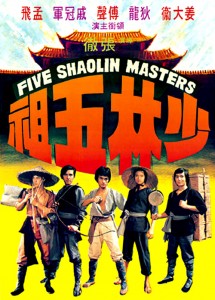
“Five Shaolin Masters” Hong Kong Theatrical Poster
Director: Chang Cheh
Writer: Ni Kuang
Cast: David Chiang, Ti Lung, Alexander Fu Sheng, Chi Kuan Chun, Meng Fei, Leung Kar Yan, Fung Hak On, Kong Do, Choi Wang, Johnny Wang, Chan Dik Hak, Chan Sam Lam, Chen Chin, Cheung Yee Kwai, Chik Ngai Hung, Chui Chung, Chui Fat, Dang Tak Cheung
Running Time: 105 min.
By HKFanatic
Most action films, even martial arts ones, are scenes of dialogue interrupted by the occasional fight. “Five Shaolin Masters” is a series of fight scenes interrupted by occasional dialogue. This is not only one of the best martial arts movies I’ve seen – this is one of the best movies I’ve seen, period. Director Chang Cheh outdid himself with his tale of the last remaining survivors of the Shaolin Temple massacre. Although I still have lots of love for Cheh’s “Five Element Ninjas” and its goofy, super-powered antics, “Five Shaolin Masters” might be my new favorite Shaw Brothers classic.
Several things I love about this movie: for one, it doesn’t mess around. There’s no ill-advised attempts at humor, no romantic subplot. In fact, there isn’t a single female character in the whole movie. The cast is uniformly excellent but three of the Masters stand out more than the others. David Chiang is the closest thing the film has to a main character; he might not have the flashiest moves of the Five Masters but he sold me on his commitment to righteousness and stopping those damn Manchus.
Ti Lung – Ti Lung is great in this and I think this was the first time I’d seen him as a young man. He was a handsome dude back in the day! He also gets the toughest opponent out of all the Masters, the guy with the swinging axe. Then there’s Alexander Fu Sheng, who many felt could have been as big as Bruce Lee if not for his untimely death at the age of 29. He plays the youngest of the Masters and he’s the most rambunctious of the bunch. He jokes around a lot and the other guys don’t always take him seriously, but deep down he has a heart of gold. There’s a scene where he is ordered to give up Shaolin secrets under threat of torture and you just know there’s no way in hell he’s saying anything.
In “Five Shaolin Masters” the bad guys are just as memorable as the heroes, a hard feat to pull off in any movie. But you’ve got the bad-ass guy who fights with an axe on a rope; two identical twins who guard the Magistrate, who himself can kill you with his ponytail; Bryan Leung AKA “Beardy,” Sammo Hung’s buddy and an always formidable foe; and don’t forget the entire army of black-shirted enemies that’s in nearly every scene.
The soundtrack is excellent. The main theme is this creepy motif that’s repeated often and almost sounds like it could be used in a giallo. The ominous music lets the viewer know that the stakes are high. The Shaolin Temple has been destroyed, the heroes are on the run. Their only hope is to unite with their patriot bothers in Central China, perhaps win the favor of the outlaw bandit known as “Iron Face” and his men, and strike back at the evil Qing Dynasty.
“Five Shaolin Masters” has the big, important feeling of an 80’s comic book cross-over: all your favorite heroes are coming together to face an almost un-defeatable foe. Even though the film runs for nearly two hours, there’s no filler; no pointless scenes that you wish had been left on the editing room floor. Just pure, ass-kicking nirvana the whole way through. And the editing itself is a work of art: even though Chang Cheh has no less than five different battles going on at the end of the movie, the transition from fight to fight is seamless.
In a rare move for a martial arts film, the heroes acknowledge their own weaknesses and admit that they might not be able to defeat the villains. I’m not sure if this was just a plot device to keep the audience in suspense for the final battle – “Oh my God, will our heroes actually be able to beat that invincible dude with the swinging axe?” – but, hey, nice display of humility, guys! Of course, what would a Shaw Brothers movie be without a lengthy training sequence? For once there’s no wise old master to reach our protagonists; presumably their Master perished in the destruction of the temple. So instead David Chiang and company train on their own, in the midst of nature, for 6 months straight. After that you better believe there’s hell to pay.
In contrast to other Shaw Brothers movies, “Five Shaolin Masters” takes place mostly outdoors. I liked it. The Shaw Brothers’ sets are great but they always look like just that, sets. The natural scenery in this movie sold me on the reality of the plot. Of course, this wouldn’t be a Chang Cheh movie without plenty of blood ‘n guts and “Five Shaolin Masters” doesn’t disappoint in that department. People get their scalps cut off, their abs ribbed open. It’s a mess! And there’s always your patented Chang Cheh themes of brotherhood and honor. It’s no surprise that Cheh would go on to be a mentor to John Woo. Woo made the same kind of films, only with guns instead of swords.
You can probably tell that I loved this movie. I haven’t seen as many Shaw Brothers flicks as some of cityonfire.com’s readers and staff and I look forward to exploring more of the catalog, but I get the feeling that “Five Shaolin Masters” will always be one of my favorites. If you have a single bone in your body that appreciates kung fu movies, then you owe it to yourself to see “Five Shaolin Masters.”
HKFanatic’s Rating: 10/10
By Joe909
I first came across Five Shaolin Masters in a run-down department store in the early 1990s; they had the US video release for maybe three dollars or so. Since I was young, I was stupid and broke, and so I didn’t have even the few dollar bills to buy it. Flash forward ten or so years, and I’ve finally gotten a chance to see this film. It’s so good, I regret not buying it back in the day.
A few online reviews (particularly on the Hong Kong Movie Database) had me expecting a low-budget, slow-moving film with bland martial arts choreography. I honestly don’t know what movie those reviewers saw. Five Shaolin Masters is action-packed from beginning to end, features the occasional artsy dash, livens up the narrative by splitting up into different storylines, and features great choreography, all of which was overseen by Liu Chia-Liang himself. The only thing I’ll agree with those reviewers on is that the movie does at times seem low-budget, but this is only because instead of shooting on the typical, grand Shaw studios, this movie is mostly shot outdoors, in nondescript, bland forests and hills.
Five Shaolin Masters is part of a cycle of Shaolin-centered films Chang Cheh directed in the mid-1970s, all of which starred Fu Sheng and Chi Kuan-Chun, and which featured Liu Chia-Liang as choreographer (save for 1976’s Shaolin Temple, which Liu apparently declined to take part in). These movies were more traditional kung-fu than earlier and later Chang Cheh productions, and in some ways seem like a combination of his own films and Liu Chia-Liang’s later movies (i.e., 36th Chamber of Shaolin). As I said in my Shaolin Temple review, these movies offer a different view of the directing/screenwriting powerhouse of Chang Cheh/I Kuan, and should be entertaining for all kung-fu nuts.
Shaolin Temple, released in 1976, starred Fu Sheng (as Fong Sai-Yuk), Chi Kuan-Chun (as Hung Sze-Kwan), David Chiang (as Hu De-Di), and Ti Lung (as Cai Dezhong). The movie ended with the destruction of the Temple by Manchu dogs, with these four heroes and a few surviving compatriots rushing off to join the anti-Ching movement. Five Shaolin Masters picks up directly after this, and features the same actors as that film, though only David Chiang and Ti Lung reprise their roles; Fu Sheng and Chi Kuan-Chun appear as different characters, and Fong Sai-Yuk and Hung Sze-Kwan are only mentioned in passing. Wang Lung-Wei also appears in both films as the same villainous character, which is strange, as he was killed at the end of Shaolin Temple. So all of this implies that Shaolin Temple was a prequel to Five Shaolin Masters, which of course was released two years prior. I’d advise those new to both of these movies to check out Shaolin Temple first, then move on to Five Shaolin Masters. Both films perfectly compliment one another.
The film opens with the five titular heroes meeting after escaping Shaolin. They all make an oath to destroy the Manchu, and split up to rally the cause. This opening sequence offers several action scenes, with each hero battling the Manchu as they get away from the burning Temple. Chang goes for an epic touch as each character is introduced in action, then the shot freezes and we get an on-screen legend of the character’s name and the actor’s name. Here we also meet the five principal villains, who also receive a freeze-frame introduction. To improve the fun factor all the more, the heroes and villains get their own recurring themes. In fact, you’ll find yourself humming the heroes’ theme long after watching the movie.
Chang breaks up the narrative by showing what happens to each of the five heroes after splitting up. This makes the film seem more fast-paced, and also increases the action quotient. The five heroes meet fellow rebels and run into the principal villains again, setting up the feud that propels the film. The interesting fact is, in each section the hero gets his ass handed to him. The Fu Sheng section is especially memorable, as he runs into Wang Lung-Wei and eventually realizes that Wang is the traitor who aided in the destruction of the Temple. (Which itself is another interesting tidbit, as the traitorous nature of Wang’s character was already discovered, at the end of Shaolin Temple).
The heroes get back together and realize they’re no match for their opponents. So they decide to spend however long it takes to train themselves into better fighters. Realizing the Manchu will search everywhere for them, they head back to the ruins of the Temple, which they figure is the last place their pursuers will look. Their hunch is correct, as the villains spend the next year searching for them in vain. At the same time as this, the heroes keep in touch with a group of anti-Manchu rebels, who await the return of the five so they can finally get vengeance. How the five heroes manage to survive in the wilderness (no mention of money or where they’ll get food) is never addressed.
A unique aspect of these training sequences is that, instead of being taught by some decrepit old master, the heroes train themselves. I’m not sure how successful this would be in the real world, but it works out for them. The training doesn’t take up a large portion of the running time; instead, we get a few well-shot scenes of Ti Lung training with a fighting staff, Fu Sheng and Chi Kuan-Chun sparring, David Chiang impaling trees with his iron chain, and Meng Fei working on his technique. Finally the heroes decide they’re as ready as they’ll ever be, but to increase the unique aspect of this film even more, they STILL doubt their ability to defeat the villains! Self-doubt is something you don’t normally see in a kung-fu film, especially before the climactic confrontation.
The heroes arrange it so that they can take on the five villains (and their two henchmen) along a riverbank in a secluded section of the forest. Knowing that the villains will want to kill them so they can take the credit, the heroes capitalize on the villains’ bloodlust, making them come after them without the Manchu army by their side. The five masters split up and take on their respective enemies.
Since this film is more traditional than your average Chang Cheh movie, these fights don’t feature any outrageous styles or weapons. Instead, everyone fights with solid, real-life techniques; again proving the presence of Liu Chia-Liang. About the closest we get to bizarre styles is one villain, who fights with an axe head that’s attached to a rope. This doesn’t seem to me the most accurate or reliable weapon, but it works well enough for him. Another of the villains uses his ponytail to ensnare his victims and snap their necks, so that’s pretty outrageous, but nothing like the crazy stuff you’d see in later Chang Cheh movies.
Chang flawlessly cuts between these five fight scenes, each of which are greatly done. Every actor, even David Chiang, looks impressive, and I found myself totally caught up in the spectacle. The fighting, acting, and direction take it all far beyond the inferior, low-budget kung-fu flicks of the period. The final fifteen or so minutes of film are comprised of this running battle, and some of the fights have an outcome you might not expect. The movie ends on a successful note of vengeance gained, and I’m not ashamed to admit I was totally psyched by the whole experience.
Getting into the more technical details, Chang Cheh’s direction throughout is perfect. I mentioned in my Shaolin Temple review that the finale to that film was overwhelming, jumping back and forth between so many fights. Chang does the same here, but he handles it much better. Some of the transitions between fight sequences are so well done that I found myself muttering “that’s cool” out loud. As I said above, Chang also gets a bit artsy, mixing up film stocks. Several flashbacks are filmed in black and white, and this combination of black and white and color looks phenomenal on the Celestial remaster.
Like I mentioned, the bizarre weaponry is toned down, but Liu Chia-Liang’s choreography more than makes up for that. The violence is limited to blood spurting out of mouths and wounds, and isn’t near the level of several Chang Cheh films. A few guys get impaled by finger thrusts, and one of the main villains gets the top of his head lopped off in a fantastic scene, but other than that the bloodshed is minimal. I suspect there was a crackdown on film violence in Hong Kong in the mid-1970s, as Chang toned down the bloodshed in his other Shaolin films. In some cases (i.e. Men from the Monastery), he used colored lens gels to obscure the violence. Five Shaolin Masters features a bit of this, as some of the black and white scenes are pretty bloody. That being said, this movie does feature a guy getting his eyeballs kicked out.
Acting is great throughout, though characterization isn’t all it could be. We don’t really get to know our heroes and their enemies; instead, all we need to know is that one side is good and the other is evil. Therefore it’s up to each actor to make his character memorable, and they all accomplish this with ease. This actually gives the movie more of an epic vibe; just like in the Sergio Leone Westerns, we don’t learn very much about our heroes’ backgrounds, instead getting to know them through their cool demeanor and recurring theme songs. This gives the proceedings a mythic feel.
I was really impressed by this film, and I think all readers should ignore those reviews that claim it’s talky and boring. I can’t imagine the old school fan who wouldn’t enjoy it, and the flawless Celestial remaster is the perfect presentation.
Joe909’s Rating: 10/10






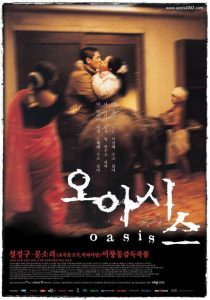


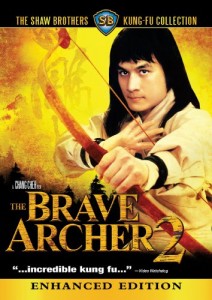
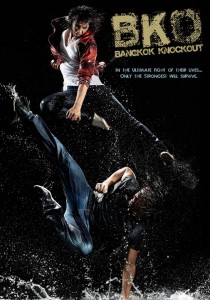
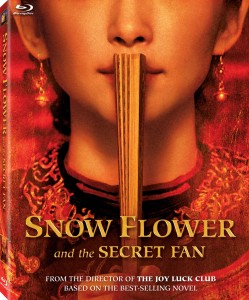


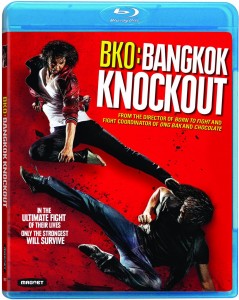

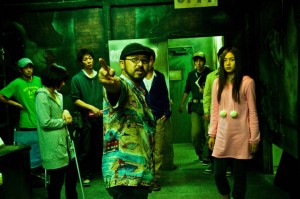
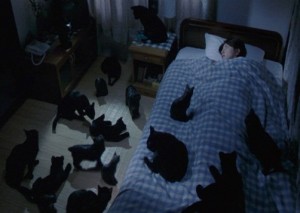
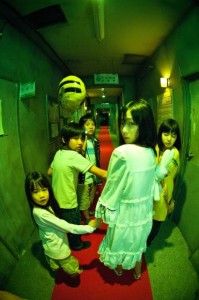






Be the 1st to Comment